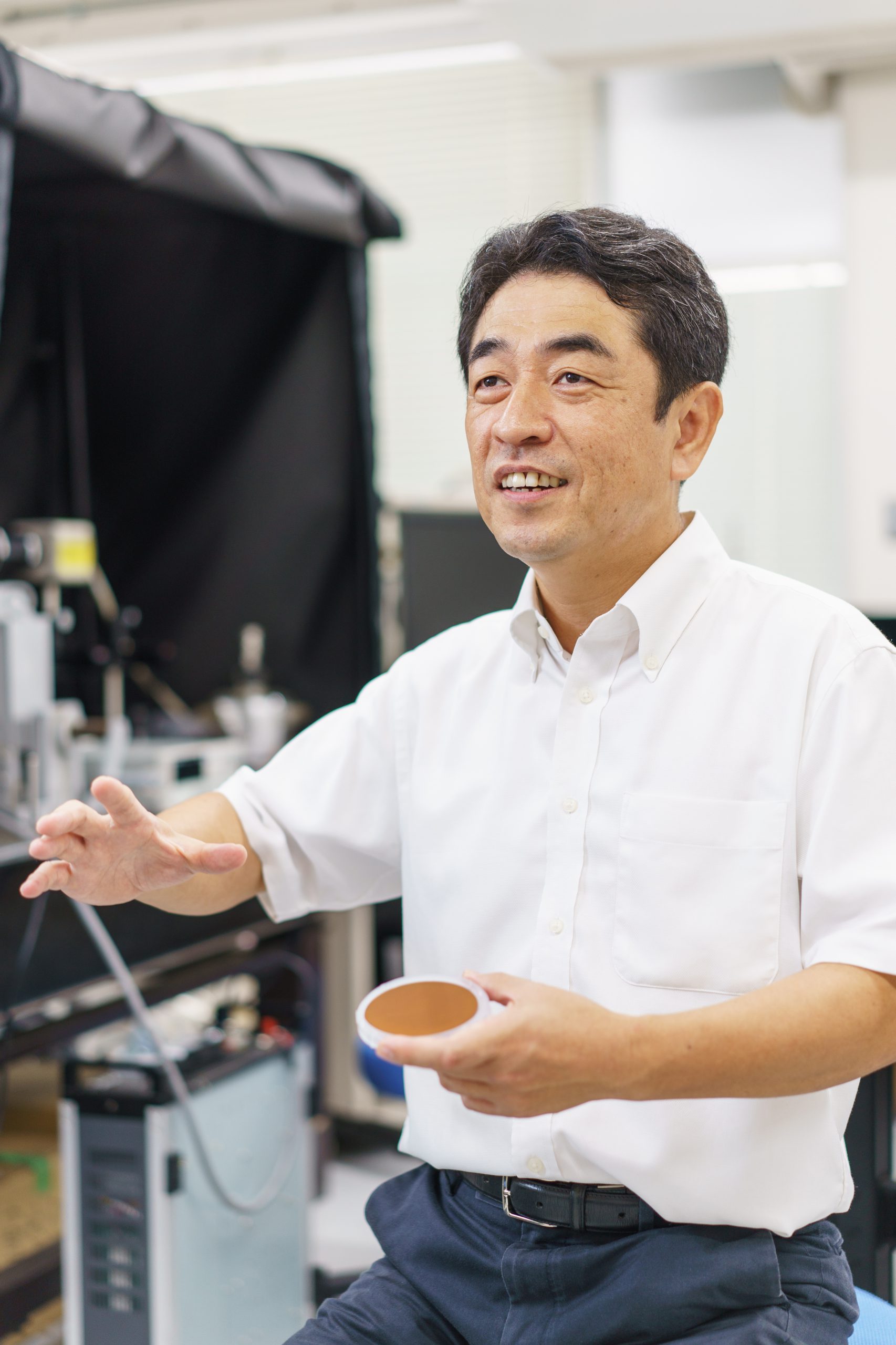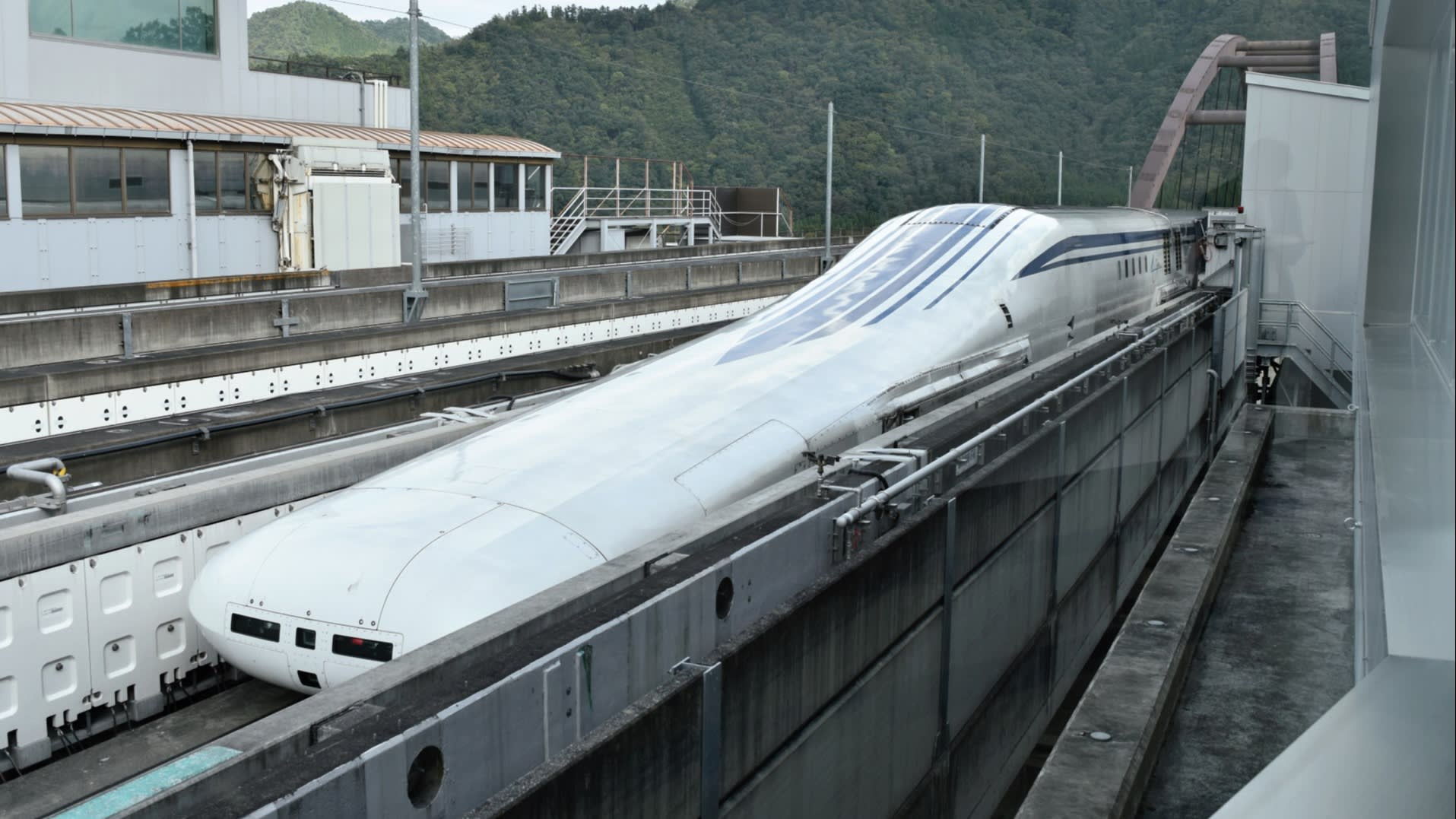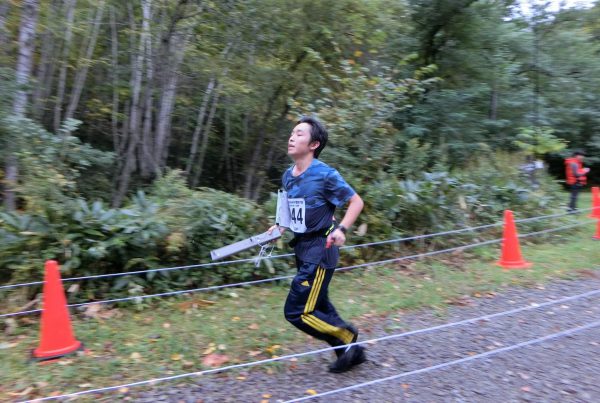Prof. Takayuki Ishibashi is a professor at the Materials Function Engineering Group at Nagaoka University of Technology. His areas of research focus on holographic 3D display, magnetic thin films, superconducting thin films, magneto-optical effects, and magnetic imaging. He joined the university in 2007 and since then focused on his own laboratory and training students in the fields of magnetic imaging technique, magneto optics, and superconductor thin film. When asked about these areas, he mentioned that these can be difficult concepts to understand but because it can be visualized, he has had students who wanted to study magneto-optics deeply.
Prof. Takayuki Ishibashi of Nagaoka University of Technology
NR: How did you get in your field of research?
TI: Before NUT, I spent a good amount of time at Tsukuba University for my PhD where I studied and prepared thin film which are used as superconductors.
Superconductors don’t have resistivity / resistance so if you apply current, this current does not stop so it can be used as a superconducting magnet. Linear motor cars such as next-generation or high-speed bullet trains that use very strong magnetic field are some applications. Shinkansen speed can be around 300km/h, but a linear motor car can go about 500 to 600km/h.
At that time, my supervisor had a technique to prepare thin film inside a high vacuum chamber and he asked me to study high-TC superconductor thin film, so I started to work on it.
Central Japan Railway Co. (JR Tokai) has made plans to build a maglev (magnetic levitation) train to run from Tokyo to Nagoya. The train that would be used on that line is designed to reach speeds of up to 500 kph and is expected to connect Tokyo to Nagoya in just 40 minutes. Image source: Asia Nikkei
NR: What elements are you using for your high-TC superconductor research now?
TI: Bismuth, Strontium, Calcium, and Copper. These materials have high critical temperature.
NR: What does the process look like?
TI: Metal is heated, evaporated, substrate is collected, element is deposited on the substrate. We then introduce oxygen. I use ozone, a very strong material to oxidize the metals, to get the oxide on the substrate. This is a very difficult technique, because this vacuum chamber, has very low pressure but we need to oxidize the metal.
When I started this work, there was not a lot who succeeded in preparing a superconducting thin film in a vacuum chamber. It was a very difficult challenge.
NR: Tell us how you succeeded in making magnetic materials such as thin film.
TI: After receiving my PhD, I started working with Professor Katsuaki Sato of Tokyo University of Agriculture and Technology. During that time, I moved this vacuum chamber from Tsukuba to Tokyo and worked with Prof. Sato who was studying semiconductor and magnetic materials and magneto-optics. Then, for several years, I studied the areas of magnetic materials and magneto-optics as well.
We knew that preparing magnetic materials like thin film wasn’t easy. Usually, we need a very expensive equipment. So, I asked and thought about how to get magnetic thin film easily?
After doing some research here and there, I found out that someone invented a new technique to prepare superconductor thin film using some solution put on the substrate, then in the furnace, then finally, the superconducting thin film. A very simple technique.
I then reached out to someone at a chemical company in Japan and asked them if I can prepare garnet thin film using some special solution, and they told me that they could prepare the solution but wasn’t sure if garnet thin film was possible. Together with my students, we gave it a try and after 2-3 months, we succeeded in preparing garnet thin film.
NR: Why garnet thin film?
TI: Because it is the best material for magneto-optical effect, the largest magneto-optical effect can be obtained by garnet.
NR: So you successfully produced garnet thin film, how did you take this research further?
TI: We didn’t know how to use garnet at that time so I discussed with Prof. Sato how the garnet thin film sample that we produced can be used or what are the possible applications of it.
Through continued research, a year later, I read about Prof. Johansen of Oslo University in Norway and found that he worked on magnetic field imaging of superconductors. Basically, when you apply current in a superconductor, a magnetic field is generated. If you can see this magnetic field, you can see the current in the superconductor (imaging). So Prof. Johansen discovered how to observe magnetic vortex in real time. I went to Oslo University for six months to study magneto-optic imaging from Prof. Johansen.
Given what I learned from Prof. Johansen on magnetic field imaging of superconductors, Prof. Sato’s guidance on magnetic optics, the garnet thin film produced by the students, and my research in superconductor thin film, I decided to do magnetic-imaging of the garnet thin film.
Could the garnet thin film help in making a high quality 3D in the future? Image Source: Wonderful Engineering
NR: Now that you have put these pieces together, how do you intend to pursue it? What do you see, then, is the future of garnet thin film?
TI: In terms of applications, we can measure the magnetic field distribution easily because the magnetic field is recorded in garnet.
Let’s take a look at cellphones for example. Cellphones use some type of filter to cut the noise. If we don’t use filters to avoid the noise, the cellphone will not work. One application that I see can be in the inspection of high-frequency devices. If we are able to visualize the microwave corresponding to the frequency, by putting the garnet, then we can identify all the signals generated from the device. This can help in identifying where the noise is coming from because you can see it from a visual standpoint.
In the future, our dream is to make high-level 3D display. We want a 3D that provides a great visual experience regardless of the angles or visual standpoint. The quality is high, it looks alive and like a real 3D. And we hope that this research can help that become a reality in the near future. And I hope the students who choose this area are those who think by themselves and do things by themselves.













